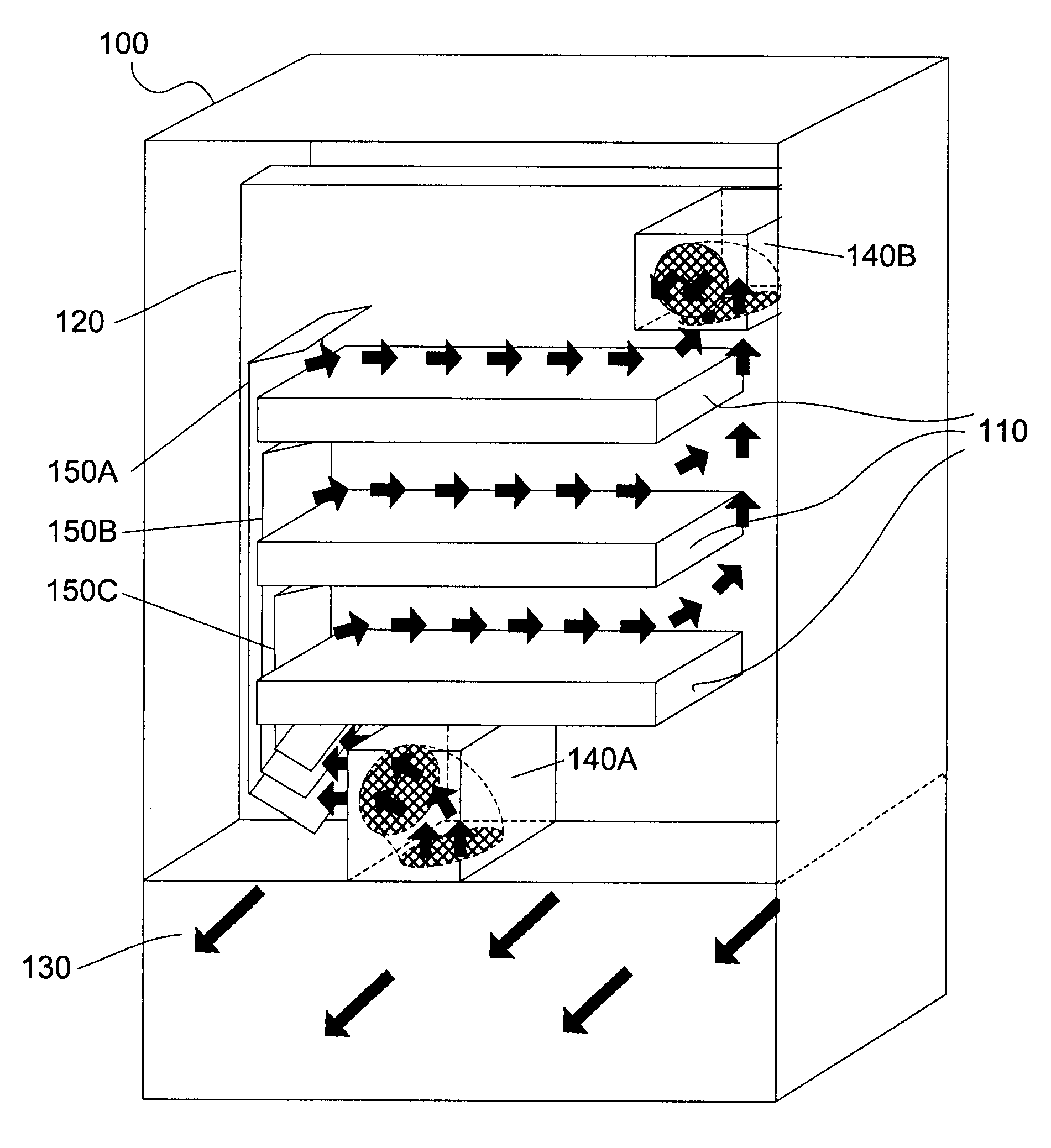Apparatus and method for directing airflow in three dimensions to cool system components
a technology of three dimensions and airflow, applied in the direction of lighting and heating apparatus, electrical apparatus casings/cabinets/drawers, instruments, etc., can solve the problems of affecting the effectiveness of the cooling mechanism, the type of cooling mechanism suffers several drawbacks, and the internal system temperature rises
- Summary
- Abstract
- Description
- Claims
- Application Information
AI Technical Summary
Problems solved by technology
Method used
Image
Examples
Embodiment Construction
refers to the accompanying drawings. The same reference numbers in different drawings identify the same or similar elements. Also, the following detailed description does not limit the invention. Instead, the scope of the invention is defined by the appended claims and equivalents.
EXEMPLARY APPARATUS
FIG. 1 shows a perspective view of an exemplary system 100 in which the invention may be used. As shown in FIG. 1, system 100 includes a plurality of circuit boards 110, a midplane 120, an air passage 130, exhaust modules 140A-140B, and air guides 150A-150C. Airflows are represented by arrows. System 100 is oriented in FIG. 1 such that the front faces into the page, the back faces out of the page, the sides face the left and right, the top faces up, and the bottom faces down. The perspective view shown in FIG. 1 shows the inside of system 100 from the back.
Circuit boards 110 connect into midplane 120 and are preferably oriented in a side-to-side direction (e.g., the surfaces on which ele...
PUM
 Login to View More
Login to View More Abstract
Description
Claims
Application Information
 Login to View More
Login to View More - R&D
- Intellectual Property
- Life Sciences
- Materials
- Tech Scout
- Unparalleled Data Quality
- Higher Quality Content
- 60% Fewer Hallucinations
Browse by: Latest US Patents, China's latest patents, Technical Efficacy Thesaurus, Application Domain, Technology Topic, Popular Technical Reports.
© 2025 PatSnap. All rights reserved.Legal|Privacy policy|Modern Slavery Act Transparency Statement|Sitemap|About US| Contact US: help@patsnap.com



